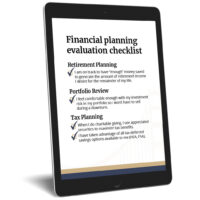
Achieving big goals through Design thinking, reverse engineering, and more
Recently, I had the opportunity to speak with Josh Dillingham the host of the Playing Injured podcast, a podcast focused on the stories of individuals who have excelled at navigating life’s curveballs and persevering through adversity. In this conversation, I shared the lessons I have learned through training for Ironman triathlons that can help make big life goals easier to achieve. Here are some of the discussion highlights from our conversation:
On identifying, admitting and committing to your specific goal
We all often have things swimming around in the back of our heads; things we’re hesitant to admit or afraid to say it out loud, but something we really want to do. Stating what you want to do is the start. Once you state it, you can create a specific goal related to it and ultimately a plan to support it. Without stating your aspiration and tying a goal to it, the ideas just keep swirling around in your head. They feel far out, unattainable, and there is no path to achievement. Lacking clarity, many people give up before they even really give themselves a chance. When you have ideas you can’t shake, trust that you have good instincts and identify the specific goal for which you can develop bite-sized actions to accomplish it.
Once you admit your goal, the next step is to commit to it. Tell a friend, a spouse, your business partner, or your coach or advisor. Once you make the decision to commit to the goal, you leave the uncertainty behind, boost your happiness, and can proceed knowing what you’re focused on.
On “reverse engineering,” getting help, sticking with a plan, and being flexible to achieve your goal
Whether you’re building a house, starting a business, trying to achieve a retirement number or a time for a race, you can reverse engineer what you need to do to go from where you are now to where you want to be. The problem is some people don’t really know how to create those plans. If you’re trying to build a house, you’re probably not going to do the architecture plans yourself. You probably don’t know all the steps and the pitfalls to avoid to build a solid structure. You’re going to hire professional help. If you’re doing a triathlon or pursuing a financial goal, your knowledge may get you part way there, but oftentimes it is having a coach or an advisor who can help you stick to your plan that makes the difference in succeeding.
When people have a hyper-specific goal in mind and they fall short, they might define the effort as failure. If you build a plan with a band of acceptable outcomes —-a stretch goal and then a fallback goal—and you land somewhere in that range, you will be satisfied. You can also build in anticipated “setbacks” into your plan. This way, when an injury or event takes you off your path, you don’t break down and fall apart. You learn how to“play injured” and carry on despite what happens along the way.
On design thinking and making things easy
Making it easy is so important. That doesn’t mean there isn’t a lot of hard work along the way, but it doesn’t have to be all strenuous. It’s best to focus your hard energy on the things that can’t be made easier and then find the parts that you can make easier.
I like to use the concept of design thinking to make things easy: how can I create my plan and my schedule to work for me instead of against me? In triathlons my coach and I create a 7-8 month training plan and break it down into weekly and the daily workouts. I carry around this regimen on a piece of paper that I can refer to at any time. It eliminates extra decision-making. I know what I’m going to do in the morning. I know if I’m doing something else in the afternoon, I know how long, how far, what type of effort. I eliminate obstacles through design as well. Since I know what I’m doing in my training schedule for the triathlon, I’ll set out all the stuff I need the night before. If you get that all set up and advanced and it just makes it easy to just get up and go.
Design thinking in personal wealth management may mean you have a retirement target and a timeframe, and you break down the contributions you need to make each year or each month. You set up automatic contributions to a 401(k) or deposits to your investment account to eliminate the decision. You may even choose to work with an advisor to invest for you. Working with a professional also eliminates the emotional strain that comes with tumultuous markets, wondering if you should take action or not, and questioning your choices.
On being a student, not a master, and challenging limiting beliefs
We are our own worst prisons. We let our limiting beliefs stop us from pursuing what we want. Rather than asking only, “What is getting in my way?” I like to ask, “What is it about myself that is getting in the way? What are my limiting beliefs that I am holding on to?”
For example, when I first decided to do triathlons, I thought:
“Doing an Ironman is impossible.”
“Well, maybe not impossible. Other people do it.”
“But can I?”
“What am I afraid of?”
“What are my limiting beliefs?”
If you get creative, use design thinking, and challenge your limiting beliefs, you can see a way to achieve your goal. When you have a goal you perceive as impossible, you should ask yourself, “ Why if I really want to do that, I am not pursuing it?” Sometimes you have to sit and let that question simmer for a while before you figure out really what the limiting belief is. When you begin to wonder how you’ll get past the limiting belief, remember all of the times in your past when you have been successful at carrying on despite limitations. Get curious and be a student, ready to learn rather than thinking you should have it mastered.
On getting stronger when you rest and the benefit of expert guidance
A coach, advisor, or mentor who understands what you want to accomplish can guide you through the journey of achieving your goal. You’re still going to have to do the work, but you can build and learn from the experience of others and stand on the shoulders of giants. With a coach, you get a rocket boost because you learn more. Some of the learning is the technical knowledge you gain, but sometimes it’s validation of what you’re going through, ”It is normal not to know what to do right now, or it is normal to feel bad at this point in your training; you should be feeling tired right now.”
One of the key things that my coach told me is you don’t get stronger from training. You get stronger from the recovery process. That’s when the muscles actually rebuild. They’re being broken down when you’re training, they rebuild when you rest. So if you’re not eating well and getting the right amount of rest in the right balance with your hard workouts, you’re thrown away a lot of your good work in the end.
When you are extra driven, it is hard to back off. You continue to push forward to try to achieve your goals faster. In sports this is called over-training. At The Advisory Group, for midlife business owners and leaders, we call this “gas pedal risk” (pushing the pedal to the metal, driving full speed ahead, afraid to slow down or stop). While it is hard to go slower and back off a bit, as I have to do on my recovery days, with the help of my coach,I find it much easier to maintain this discipline. It’s pretty exciting experience when you realize, “Wow, I’m actually having more fun, have more energy, I am less tired and I get better results.”
The information provided herein is for informative and educational purposes only. The use of hyperlinks to third party websites is not an endorsement of the third party. Third party content has not been independently verified. To understand how this content may apply to you, please contact a financial advisor.






